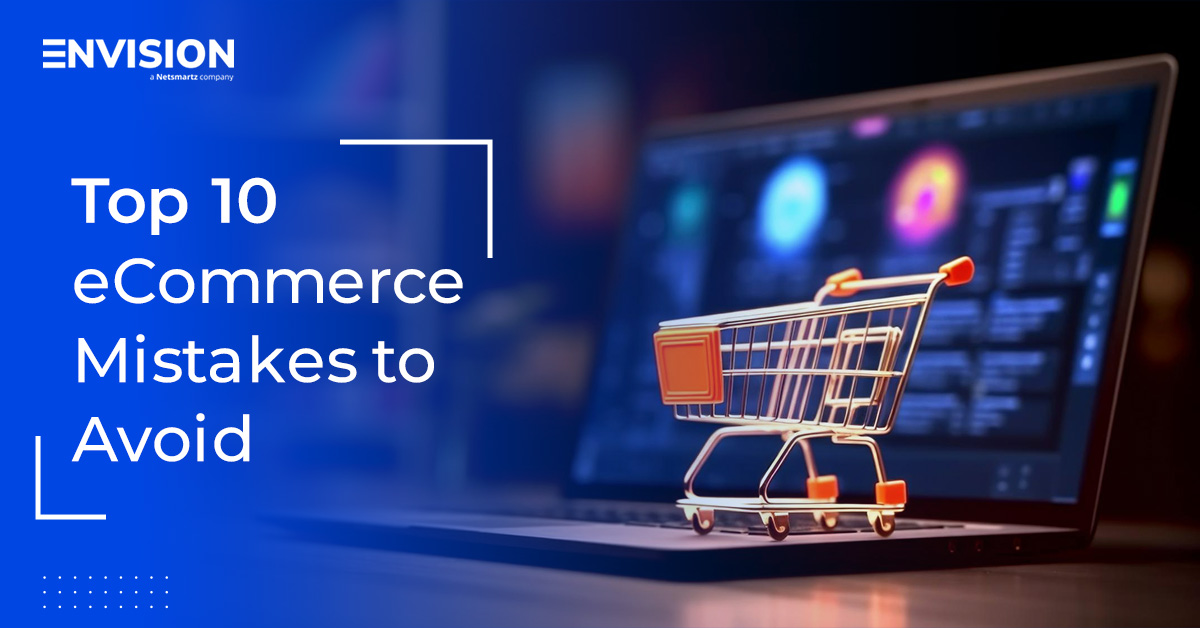Top 10 eCommerce Store Development Mistakes to Avoid in 2024 and Beyond
-
 Kamlesh
Kamlesh
- 1 year

The ecommerce industry has truly exploded in the past few years, transforming the way people shop for their needs and wants. From daily use items to luxury goods, online shopping has become the dominant ‘modus operandi’ for consumers – thanks to the tremendous convenience it brings to the table.
Global ecommerce sales are expected to hit $8 trillion by 2027, up from $4.28 trillion in 2020. And, driving the force behind this growth are individual ecommerce stores, like yours, catering to varying needs of consumers.
What is an eCommerce Store?
An ecommerce store is basically an online retail store where businesses sell their products or services. It may consist of a website or an app where customers can browse, choose, and buy what they want. Examples include niche ecommerce stores that specialize in handmade crafts, online supermarkets offering groceries, and tech stores selling the latest gadgets.
Sounds simple, right? Well, not quite. eCommerce store management and development can be pretty complicated. Mistakes can happen, and they can have a huge impact on your business. In fact, many businesses fail because they don’t get it right.
Common Online eCommerce Store Development Mistakes to Avoid
Running an ecommerce store isn’t a walk in the park. As your store encounters challenges like market volatility, intense competition, and rising customer expectations, it’s crucial to be aware of the common pitfalls and learn how to avoid them. Whether you’re a seasoned ecommerce pro or a newbie, understanding these pitfalls is key to beat the challenges and grow your business.
Here are the top ten ecommerce store mistakes and why you need to avoid them:
- Poor ecommerce user experience
Imagine visiting an ecommerce retail store and feeling lost because of a cluttered layout, confusing navigation, or slow loading pages. Frustrating, right? A bad user experience can drive customers away and lower your conversion rates.
Also, if your website isn’t mobile-friendly, you’re missing out big time since a huge share of people shop on their phones now. Make sure your site is easy to navigate, loads quickly, and looks great on all devices. A seamless experience helps customers find what they need without any hassle.
- Choosing the wrong ecommerce platform
Selecting the right eCommerce platform is crucial for your store’s success. The wrong platform can limit your growth and functionality. Compare ecommerce website platforms like Adobe Commerce Cloud, Salesforce Commerce Cloud, and others based on your needs.
Consider factors like scalability, customization, and integration capabilities. Choose a platform that aligns with your business goals and can support your long-term growth.
- Poorly designed product pages
Your product pages form the very core of your ecommerce store. High-quality images, detailed descriptions, and customer reviews are essential. Poorly designed product pages can lead to a decline in customer trust and an increase in return rates.
Highlight key features and benefits, and use videos or 360-degree views to enhance the shopping experience. Make sure your product pages are informative, engaging, and visually appealing.
- No omnichannel availability
Limiting your store to just a desktop website isn’t enough these days. Customers shop using various devices and platforms to buy wherever and whenever they feel like. They also wish to begin their journey on one device and check-out on the other.
Ensure your store is accessible on mobile browsers, apps, and optimized for different operating systems. A multichannel approach increases your reach and potential sales, giving customers the flexibility to shop how they want.
- Lack of diverse payment options
Imagine finding the perfect product, but your preferred payment method isn’t available. Frustrating, right? Offering limited payment options can lead to customer dissatisfaction and eventually result in lost sales.
Provide a variety of payment methods, including credit/debit cards, digital wallets, and services like PayPal and Apple Pay. This ensures customers can pay in their preferred way, reducing the chances of them abandoning their carts.
- Providing bare minimum customer service and support
Customer service is a critical aspect of any ecommerce store. It directly impacts customer satisfaction and retention. Ignoring this area can significantly harm your business.
Make sure you are offering numerous channels to support customers, including email, live chat, and social media. This will help ensure prompt and useful responses to customer queries and complaints, resulting in increased trust and repeat business.
- Not leveraging data analytics and insights
In today’s data-driven world, if you’re not take advantage of analytics, then you’re already at a huge disadvantage. Analytics give you valuable insights into customer behavior, areas for improvement, and user journeys. This information is crucial for optimizing your store and increasing your ROI.
Use tools to track key performance metrics like traffic, conversion rates, and customer feedback. Leverage this data to make informed decisions and enhance your store’s performance.
- Insufficient security measures
Security is undoubtedly a huge deal when it comes to ecommerce stores. If customers feel their data isn’t safe, they won’t stick around. Security breaches can damage your reputation, cost you money, and break customer trust. Many businesses don’t pay enough attention to security, leaving them vulnerable.
Ensure you have strong security measures like SSL certificates, two-factor authentication, and regular security updates. Educate your staff about best practices to prevent breaches and keep your site secure.
- Lack of market and target audience research
Understanding your target audience is vital for tailoring your offerings and marketing efforts. Without proper research, you’re shooting in the dark.
Identify your audience’s demographics, preferences, and pain points. This information helps you create personalized shopping experiences and meet customer needs effectively. Market research also uncovers new opportunities and trends, keeping your business ahead of the curve.
- Ignoring SEO and digital marketing practices
SEO and digital marketing are crucial for driving traffic to your store and attracting new customers. If you neglect these areas, you’re missing out on a lot of potential business. A good SEO strategy helps your store appear in search results, boosting your visibility and reputation.
Invest in digital marketing strategies like PPC, social media marketing, and content marketing to reach your target audience and grow your customer base.
To Conclude
Running an eCommerce store isn’t as easy as it looks. Mistakes are common, but being aware of them is the first step towards avoiding them. Learn quickly, adapt, and don’t repeat these mistakes. Have a robust strategy in place and consider partnering with an experienced platform to navigate these challenges effectively.
By avoiding these common pitfalls, you can enhance your store’s performance, meet customer expectations, and achieve sustainable growth.












